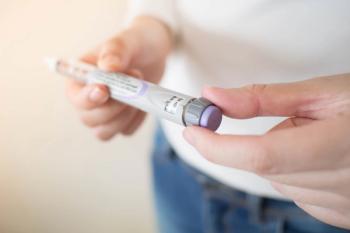
IV insulin, anticoagulants top high-alert meds list
A new survey indicates that pharmacists, nurses, and other practitioners believe IV insulin and anticoagulants should be considered the medications that can cause the most harm when used improperly.
Pharmacists, nurses, and other practitioners believe IV insulin and anticoagulants should be considered the most high-alert medications – those that can cause the most patient harm when used improperly – according to a new survey.
The Instititute for Safe Medication Practice (ISMP) found that chemotherapy, neuromuscular blocking agents, and epidural/intrathecal medications were ranked among the top five of its “High-Alert Medications for Acute Care Settings” list. More than 200 respondents – primarily pharmacists – responded to ISMP’s survey, which is conducted every two years.
Concentrated electrolyte solutions, including potassium chloride injection concentrate, hypertonic sodium chloride injection (greater than 0.9% concentration), potassium phosphate injection, and magnesium sulfate injection ranked sixth, seventh, eleventh, and twentieth, respectively. Subcutaneous insulin ranked ninth, and injectable opioids ranked twelfth.
Pharmacists vs. nurses
As with its 2012 survey, pharmacists and nurses disagreed on which medications should be considered “high alert”. Pharmacists identified sterile water for injection, inhalation, and irrigation as high alert much more often than nurses (44% of pharmacists versus 14% of nurses) as well as methotrexate, oral, non-oncologic use (71% of pharmacists versus 51% of nurses) and sodium chloride injection, hypertonic, greater than 0.9% (91% of pharmacists versus 76% of nurses).
For 14 of the 39 drugs/drug classes, significantly fewer respondents in 2014 versus 2012 felt the medications should be considered high-alert medications than the 2012 respondents.
Those with the highest reduction in risk value were: Cardioplegia solution (considered a high-alert drug by 80% in 2012, and 60% in 2014); beta-adrenergic antagonists, IV (54% in 2012 versus 35% in 2014); radiocontrast agents, IV (58% in 2012 vs. 42% in 2014); inotropic medications, IV (66% in 2012 versus 53% in 2014); antiarrhythmics, IV (70% in 2012 versus 58% in 2014); Nitroprusside sodium, IV (76% in 2012 versus 65% in 2014); dextrose, hypertonic, 20% or greater (74% in 2012 versus 64% in 2014); Oxytocin, IV (71% in 2012 versus 61% 2014) and thrombolytics (96% in 2012 vs. 87% 2014).
The only two drugs/drug classes that had a signficant increase in risk value were opioids, transdermal (considered a high-alert medication by 66% in 2012 versus 73% in 2014) and sodium chloride for injection, hypertonic, greater than 0.9% (81% in 2012 versus 87% in 2014).
Newsletter
Pharmacy practice is always changing. Stay ahead of the curve with the Drug Topics newsletter and get the latest drug information, industry trends, and patient care tips.























































































































